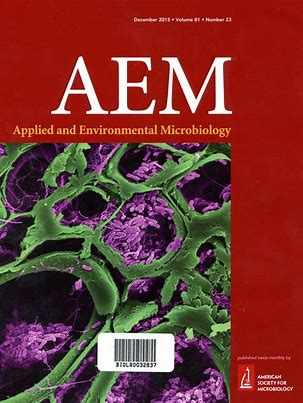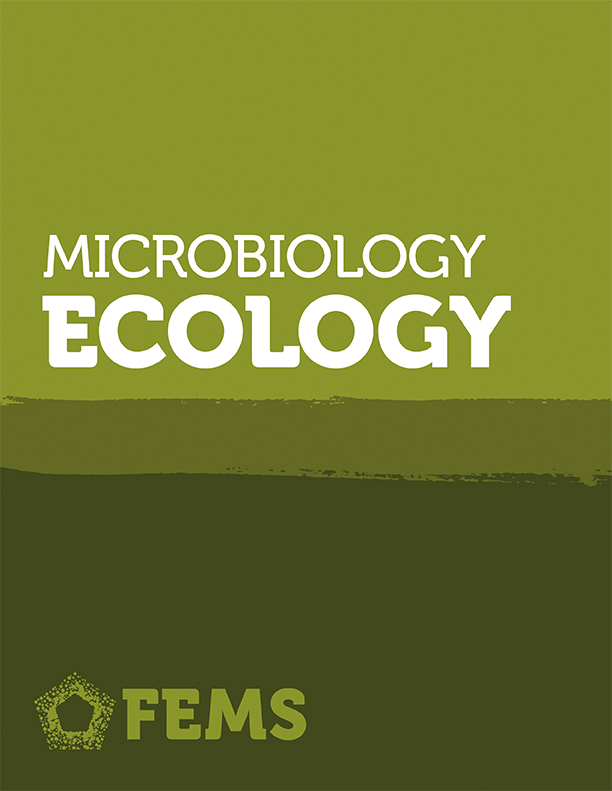Please find all scientific publications of IGB under > scientific publications
For more detailed information please refer to our > library catalogue
191 - 200 of 672 items

November 2024
Life. - 14(2024)12, Art. 1526
Viability and Motility of Escherichia coli Under Elevated Martian Salt Stresses
Max Riekeles; Berke Santos; Sherif Al-Morssy Youssef; Dirk Schulze-Makuch
November 2024
Water Research. - 269(2025), Art. 122784
Sequential decline in cyanobacterial, total prokaryotic, and eukaryotic responses to backward flow in a river connected to Lake Taihu
Jun Zuo; Siyu Yang; Hans-Peter Grossart; Peng Xiao; He Zhang; Rui Sun; Guoyou Li; Haoran Jiang; Qihang Zhao; Meng Jiao; Yao Cheng; Zeshuang Wang; Ruozhen Geng; Zengling Ma; Renhui Li

November 2024
MycoKeys. - (2024)110, 273-285
20 years of bibliometric data illustrates a lack of concordance between journal impact factor and fungal species discovery in systematic mycology
R. Henrik Nilsson; Arnold Tobias Jansson; Christian Wurzbacher; Sten Anslan; Pauline Belford; Natàlia Corcoll; Alexandra Dombrowski; Masoomeh Ghobad-Nejhad; Mikael Gustavsson; Daniela Gómez-Martínez; Faheema Kalsoom Khan; Maryia Khomich; Charlotte Lennartsdotter; David Lund; Breyten Van Der Merwe; Vladimir Mikryukov; Marko Peterson; Teresita M. Porter; Sergei Põlme; Alice Retter; Marisol Sanchez-Garcia; Sten Svantesson; Patrik Svedberg; Duong Vu; Martin Ryberg; Kessy Abarenkov; Erik Kristiansson

November 2024
Biological Reviews. - 100(2025)2, 834-854
Zooming in the plastisphere: the ecological interface for phytoplankton–plastic interactions in aquatic ecosystems
Veronica Nava; Jaffer Y. Dar; Vanessa De Santis; Lena Fehlinger; Julia Pasqualini; Oloyede A. Adekolurejo; Bryan Burri; Marco J. Cabrerizo; Teofana Chonova; Mathilde Cour; Flavia Dory; Annemieke M. Drost; Aida Figler; Giulia Gionchetta; Dariusz Halabowski; Daniel R. Harvey; Víctor Manzanares-Vazquez; Benjamin Misteli; Laureen Mori-Bazzano; Valentin Moser; Federica Rotta; Bianca Schmid-Paech; Camille M. Touchet; Julia Gostynska

November 2024
Applied and Environmental Microbiology. - 90(2024)12, 1-20
Inside the Atacama Desert: uncovering the living microbiome of an extreme environment
Alexander Bartholomäus; Steffi Genderjahn; Kai Mangelsdorf; Beate Schneider; Pedro Zamorano; Samuel P. Kounaves; Dirk Schulze-Makuch; Dirk Wagner

November 2024
Communications Earth & Environment. - 5(2024), Art. 695
Light-dependent methane production by a coccolithophorid may counteract its photosynthetic contribution to carbon dioxide sequestration
Yuming Rao; Guang Gao; Ilana Berman-Frank; Mina Bizic; Kunshan Gao
November 2024
FEMS Microbiology Ecology. - 100(2024)11, Art. fiae139
Metabarcoding reveals ecologically distinct fungal assemblages in river and groundwater along an Austrian alpine to lowland gradient
Alice Retter; Christian Griebler; R. Henrik Nilsson; Johannes Haas; Steffen Birk; Eva Breyer; Federico Baltar; Clemens Karwautz
November 2024
Biological Reviews. - 100(2025)2, 855-870
Shedding light on biodiversity: reviewing existing knowledge and exploring hypothesised impacts of agrophotovoltaics
Rachel Schwarz; Yaron Ziv
November 2024
Water Resources Research. - 60(2024)9, Art. e2024WR037508
Attributing Urban Evapotranspiration From Eddy‐Covariance to Surface Cover: Bottom‐Up Versus Top‐Down
H. J. Jongen; S. Vulova; F. Meier; G. J. Steeneveld; F. A. Jansen; D. Tetzlaff; B. Kleinschmit; N. Haacke; A. J. Teuling
Evapotranspiration (ET) is an important process in the water cycle that can help reduce heat stress in cities. However, it is dependent on surface cover. The study provides insights that can inform urban planning and water management decisions, including improving the living environment of city dwellers.
November 2024
Journal of Hazardous Materials. - 479(2024), Art. 135675
Distinct influences of altitude on microbiome and antibiotic resistome assembly in a glacial river ecosystem of Mount Everest
Xin Liao; Liyuan Hou; Lanping Zhang; Hans-Peter Grossart; Keshao Liu; Junzhi Liu; Yuying Chen; Yongqin Liu; Anyi Hu





